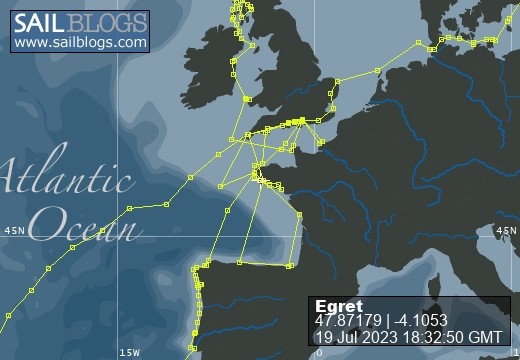
Egret
09 August 2022 | Picture: The Sunk Inner Light Vessel in the Thames Estuary
03 August 2022 | Egret at the Royal Norfolk and Suffolk Yacht Club, Lowestoft
23 July 2022 | Picture: One of the smaller locks at Holtenau
20 July 2022 | Picture: Patrick reminiscing with Juergen at Rostock
11 July 2022 | Picture: Egret at Stralsund, with the barque Gorch Fock beyond
04 July 2022 | Picture: Amanda on Bornholm
01 July 2022 | Picture: Kristianopol, with Egret at far right
26 June 2022 | Ernemar
19 September 2020 | Picture: Egret being lifted out at Ernemar, Sweden
08 September 2020 | Chart: our route from Mem into the Tjust Archipelago
01 September 2020 | Picture: the Carl Johans flight of seven locks
29 August 2020 | Picture: Egret (by G. Einefors)
27 August 2020 | Picture: Egret at Vadstena Castle
25 August 2020 | Picture: Norrkvarn Lock
23 August 2020 | Picture: Egret crossing Lake Vänern
19 August 2020 | Picture: Inside the lowest Trollhatte lock
17 August 2020 | Picture: The Gota Alv Bron in Gothenburg
16 August 2020 | Picture: the GKSS, Langedrag
13 August 2020 | Picture: Egret alongside (left) at Fisketangen
10 August 2019
125. The Diamond Coast
08 March 2015

We were woken by the dawn chorus of Dassen Island, and over breakfast watched the penguins setting out on their fishing expeditions. When we hauled in the anchor the snubbing warp was covered in tiny shrimps - a sign of how teaming with life the sea is here. We parted company from our three whales and headed north-west before a chilly breeze. We felt we were on the home straight at last, although still with a long haul up the Atlantic ahead of us. We passed Cape Columbine in the late afternoon, and with the setting of the sun we bade farewell to South Africa. The cold Benguela Current runs up this coast and it was now helping us with an extra ¾ of a knot. The wind gradually increased during the following day, and in the afternoon we took in the first, the second then the third reef, and set the staysail in lieu of the genoa. Two albatrosses glided by effortlessly in the wind which was gusting to 30 knots. By breakfast time we were 75 miles off the Orange River mouth and entering Namibian territorial waters. Several merchant ships had passed us, but we hadn't expected to encounter a fleet of German warships staging a mock battle. The 'Brandenburg' broadcast the co-ordinates and time of the exercise over the vhf, but as they didn't say which time zone they meant, I called them up for clarification. They replied that it would be starting in ten minutes, but that we could maintain our course and speed as they would be firing away from us! We saw three warships manoeuvring at high speed in the distance, but heard no guns. The wind eased during the day, but in the evening it started to get up again, and, with the course being directly downwind, we lowered the mainsail and continued under genoa alone.
Fog is prevalent along this coast because of the cold current, but visibility was moderate as we closed the coast of Namibia on the fourth day out from Dassen Island. We could just make out the low, rocky landscape, with not a tree to be seen. The wind was gusting to 27 knots, so we changed down to the staysail in preparation for our approach to land. We rounded the lighthouse on Dias Point at 1715 and hardened up onto a beam reach. The wind increased rapidly - touching 42 knots - and we got drenched by the cold waves that crashed into the side of the boat. After passing the Cardinal buoy off Angra rocks, we motored into Lüderitz Harbour with the strong wind against us. We reported to the Port Controller by vhf and anchored just outside the buoyed channel astern of a couple of other yachts. Next morning, we pumped up the dinghy and went ashore to check in at Immigration, Customs and Port Control - all refreshingly straightforward formalities.
Adolph Lüderitz established a trading station at this natural harbour in the early 1880s to export guano for use in fertilisers and gunpowder. Later, with the agreement of neighbouring colonial governments, the protectorate of German South-West Africa was formed. After a brief but bloody period in power, Germany was forced to relinquish it to South Africa during the First World War. Namibia gained independence in 1989 and is now a relatively well functioning democracy. The German origin of the town is obvious from the many examples of circa 1910 architecture: a mix of traditional Teutonic, Art Nouveau and Modernism. The Lutheran Felsenkirche, a text book design, stands on a rocky outcrop at the edge of the town overlooking the ocean. Haus Goerke, furnished and decorated in contemporary style, is open to the public and is an example of how a wealthy family tried to live as if they were back home in Germany. Surrounded on three sides by the barren rock and sand of the Namib Desert, it all seems a little incongruous.
The wealth did not come from bird droppings, of course. It was from diamonds. In the early 1900s, during construction of the railway, a worker found a glittering stone lying in the sand and soon the rush was on. The diamonds would have been formed deep underground in the Orange River region and carried up the coast with the sand. A new town called Kolmannskuppe sprung up at the heart of the mining activity, a few kilometres inland from Lüderitz. Long since abandoned by the inhabitants, parts have been reopened as a tourist attraction. We were given a lift there by one of the part-time guides, a young white musician. At the centre is a big hall with a stage and gallery where entertainments, grand balls and gymnastics were held. Our guide surprised us and the other tourists by lifting the lid of an old piano to accompany himself in a lovely rendition of the Namibian national anthem! Substantial houses, built in the early 1900s for senior employees of Consolidated Diamond Mines such as the chief engineer and manager, are gradually crumbling, the rooms filling with sand. Other buildings, some of which have been refurnished in the original manner and others almost derelict, include a hospital, an ice factory, butchery, general store and skittle alley. The whole region between Lüderitz and the Orange River is still restricted for diamond mining, which also extends offshore. What we had thought were fishing boats moored near us were in fact diamond dredgers!
Lüderitz today is an attractive and bustling African town that is a pleasure to walk around. The railway that connects across the desert to the rest of Namibia has been closed for a while, but is currently being restored, with tunnels in vulnerable places to protect against sand. Dozens of labourers were constructing a level crossing in one of the main streets for an extension of the line into the port. A redundant power station has been demolished, but its steel frame will be incorporated into a new waterfront development for businesses, retail, housing, leisure and a satellite campus for the Polytechnic of Namibia. Offshore fishing and shellfish farming are big earners, and we sampled a few oysters at one farm for a pre lunch snack. There is a reassuring confidence in the future. There are still plenty of white expatriates, and some of them gather at the Yacht Club for a drink in the evenings. I'm not sure that much sailing goes on now, but pictures on the walls show that a sizeable fleet of racing yachts once plied the bay. They made us very welcome anyway, and allowed us to use their facilities.
After three fascinating days, we raised the anchor to find that we had started our own mini fish-farm - a dozen mussels were clinging to the chain! We headed northwards up the coast with a steadily building wind from astern. For the entire 250 mile leg we would be passing the Namid Desert, a vast expanse of arid plains, mountains, canyons and especially sand dunes. Those at Sossusvlei, 60km inland, are said to be 325m high. We had planned to anchor in Hottentot Bay for the night because we had read that it was sheltered from the prevailing weather, well worth visiting for the scenery and wildlife, and nobody lived there. Besides, we liked the name! In fact, there were half a dozen fishing boats at anchor, the wind was prevailing at around 30 knots, the water was very choppy, and all we could see through the fog was a vague outline of enormous dunes. We decided to turn back out to sea and carry on up the coast. Conditions remained gloomy through the night and into the following day, with just occasional glimpses of the full moon and the sun. The further north we got, the colder it got. Yes, we were heading towards the equator, but the cold Benguela Current, with sea temperatures down to 15ºC, was having an increasing influence. On the third morning, as we crossed the Tropic of Capricorn a few miles south of Walvis Bay, we were wearing three layers under our oilskins, shoes with socks, and woolly hats! Not quite how we imagined Namibia.
(Note: Slow and expensive internet connections may prevent us uploading photos for a while. We'll catch up when we can)
Fog is prevalent along this coast because of the cold current, but visibility was moderate as we closed the coast of Namibia on the fourth day out from Dassen Island. We could just make out the low, rocky landscape, with not a tree to be seen. The wind was gusting to 27 knots, so we changed down to the staysail in preparation for our approach to land. We rounded the lighthouse on Dias Point at 1715 and hardened up onto a beam reach. The wind increased rapidly - touching 42 knots - and we got drenched by the cold waves that crashed into the side of the boat. After passing the Cardinal buoy off Angra rocks, we motored into Lüderitz Harbour with the strong wind against us. We reported to the Port Controller by vhf and anchored just outside the buoyed channel astern of a couple of other yachts. Next morning, we pumped up the dinghy and went ashore to check in at Immigration, Customs and Port Control - all refreshingly straightforward formalities.
Adolph Lüderitz established a trading station at this natural harbour in the early 1880s to export guano for use in fertilisers and gunpowder. Later, with the agreement of neighbouring colonial governments, the protectorate of German South-West Africa was formed. After a brief but bloody period in power, Germany was forced to relinquish it to South Africa during the First World War. Namibia gained independence in 1989 and is now a relatively well functioning democracy. The German origin of the town is obvious from the many examples of circa 1910 architecture: a mix of traditional Teutonic, Art Nouveau and Modernism. The Lutheran Felsenkirche, a text book design, stands on a rocky outcrop at the edge of the town overlooking the ocean. Haus Goerke, furnished and decorated in contemporary style, is open to the public and is an example of how a wealthy family tried to live as if they were back home in Germany. Surrounded on three sides by the barren rock and sand of the Namib Desert, it all seems a little incongruous.
The wealth did not come from bird droppings, of course. It was from diamonds. In the early 1900s, during construction of the railway, a worker found a glittering stone lying in the sand and soon the rush was on. The diamonds would have been formed deep underground in the Orange River region and carried up the coast with the sand. A new town called Kolmannskuppe sprung up at the heart of the mining activity, a few kilometres inland from Lüderitz. Long since abandoned by the inhabitants, parts have been reopened as a tourist attraction. We were given a lift there by one of the part-time guides, a young white musician. At the centre is a big hall with a stage and gallery where entertainments, grand balls and gymnastics were held. Our guide surprised us and the other tourists by lifting the lid of an old piano to accompany himself in a lovely rendition of the Namibian national anthem! Substantial houses, built in the early 1900s for senior employees of Consolidated Diamond Mines such as the chief engineer and manager, are gradually crumbling, the rooms filling with sand. Other buildings, some of which have been refurnished in the original manner and others almost derelict, include a hospital, an ice factory, butchery, general store and skittle alley. The whole region between Lüderitz and the Orange River is still restricted for diamond mining, which also extends offshore. What we had thought were fishing boats moored near us were in fact diamond dredgers!
Lüderitz today is an attractive and bustling African town that is a pleasure to walk around. The railway that connects across the desert to the rest of Namibia has been closed for a while, but is currently being restored, with tunnels in vulnerable places to protect against sand. Dozens of labourers were constructing a level crossing in one of the main streets for an extension of the line into the port. A redundant power station has been demolished, but its steel frame will be incorporated into a new waterfront development for businesses, retail, housing, leisure and a satellite campus for the Polytechnic of Namibia. Offshore fishing and shellfish farming are big earners, and we sampled a few oysters at one farm for a pre lunch snack. There is a reassuring confidence in the future. There are still plenty of white expatriates, and some of them gather at the Yacht Club for a drink in the evenings. I'm not sure that much sailing goes on now, but pictures on the walls show that a sizeable fleet of racing yachts once plied the bay. They made us very welcome anyway, and allowed us to use their facilities.
After three fascinating days, we raised the anchor to find that we had started our own mini fish-farm - a dozen mussels were clinging to the chain! We headed northwards up the coast with a steadily building wind from astern. For the entire 250 mile leg we would be passing the Namid Desert, a vast expanse of arid plains, mountains, canyons and especially sand dunes. Those at Sossusvlei, 60km inland, are said to be 325m high. We had planned to anchor in Hottentot Bay for the night because we had read that it was sheltered from the prevailing weather, well worth visiting for the scenery and wildlife, and nobody lived there. Besides, we liked the name! In fact, there were half a dozen fishing boats at anchor, the wind was prevailing at around 30 knots, the water was very choppy, and all we could see through the fog was a vague outline of enormous dunes. We decided to turn back out to sea and carry on up the coast. Conditions remained gloomy through the night and into the following day, with just occasional glimpses of the full moon and the sun. The further north we got, the colder it got. Yes, we were heading towards the equator, but the cold Benguela Current, with sea temperatures down to 15ºC, was having an increasing influence. On the third morning, as we crossed the Tropic of Capricorn a few miles south of Walvis Bay, we were wearing three layers under our oilskins, shoes with socks, and woolly hats! Not quite how we imagined Namibia.
(Note: Slow and expensive internet connections may prevent us uploading photos for a while. We'll catch up when we can)
Comments
| Vessel Name: | Egret |
| Vessel Make/Model: | Sweden Yachts 390 |
| Hailing Port: | Chichester Harbour |
| Crew: | Patrick & Amanda Marshall |
Egret's Photos - Main
R.jpg) |
The Gota River, Trollhatte Canal, Lakes Vanern & Vattern and the Gota Canal
2 Photos | 9 Sub-Albums
Created 30 September 2020
|
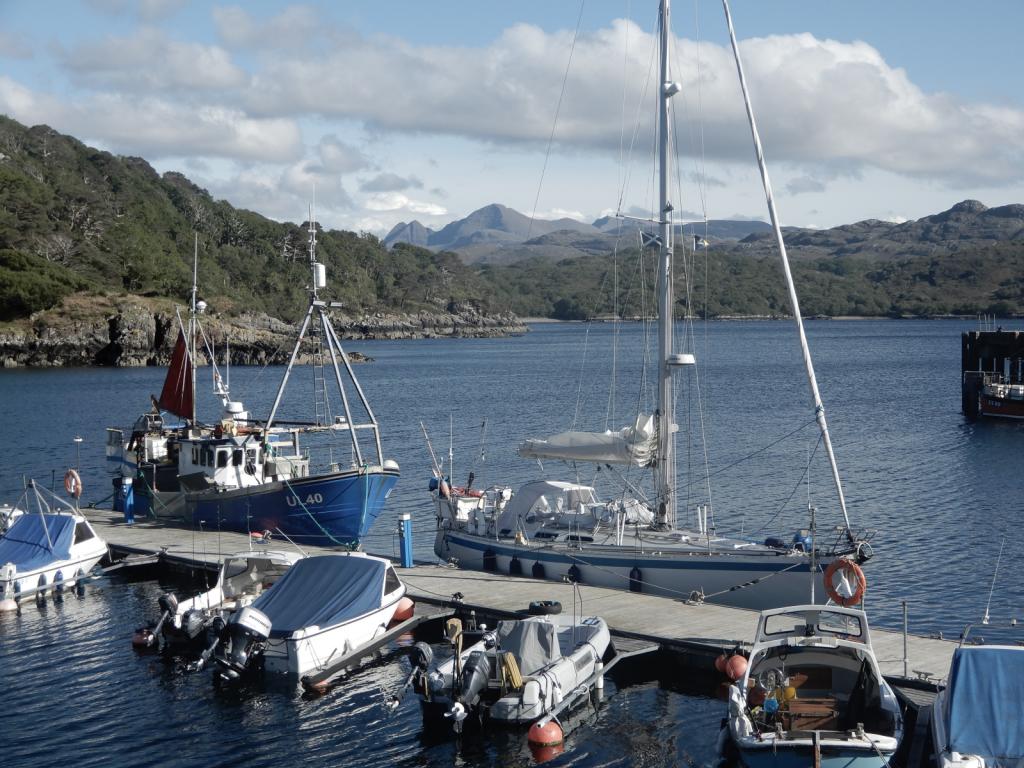 |
The Inner and Outer Hebrides, Orkney, Fair Isle, Shetland, Norway and Sweden's west coast.
1 Photo
Created 14 November 2019
|
|
Normandy, Scilly, Pembrokeshire, Ireland, Isle of Man, Northern Ireland, Inner Hebrides and the Crinan Canal.
1 Photo
Created 14 November 2018
|
Egret
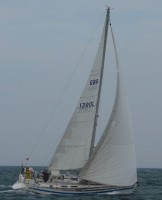
Who: Patrick & Amanda Marshall
Port: Chichester Harbour

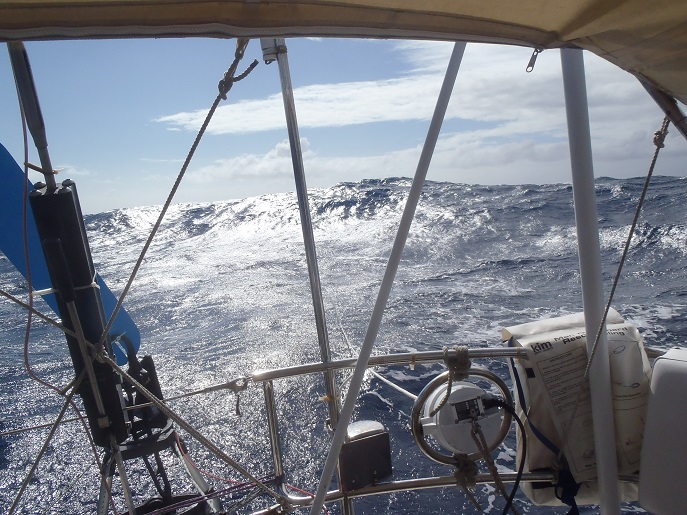
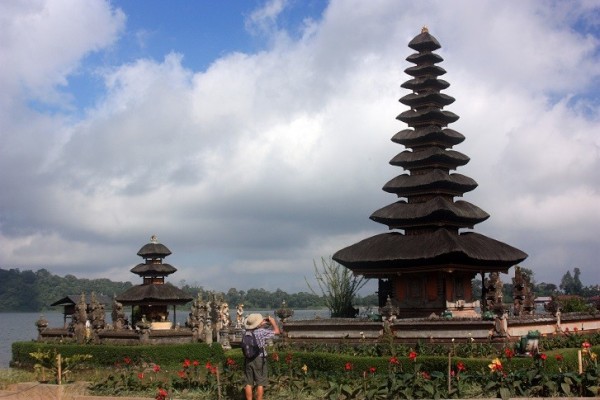
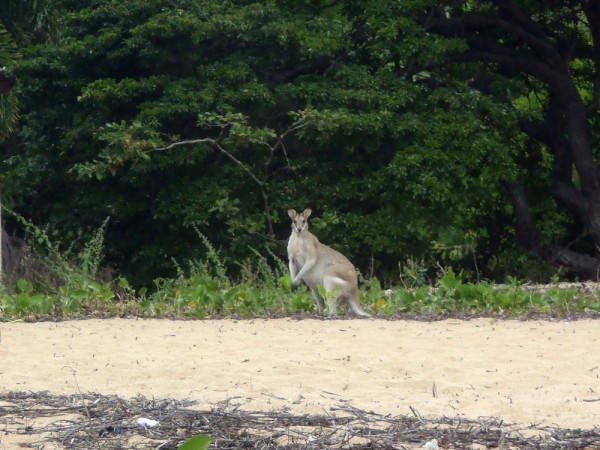
, Pentecost, Naghol (Land diving)a.jpg)
Amanda raising the Quarantine & New Zealand courtesy flagedit_edited-1 a.jpg)
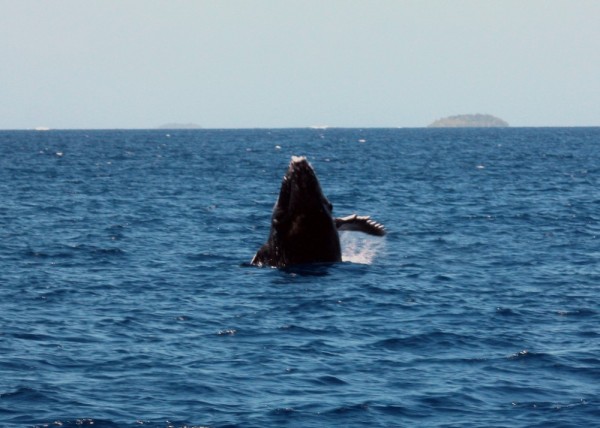
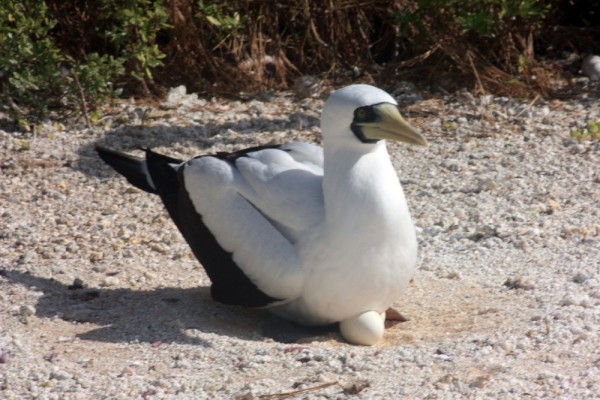
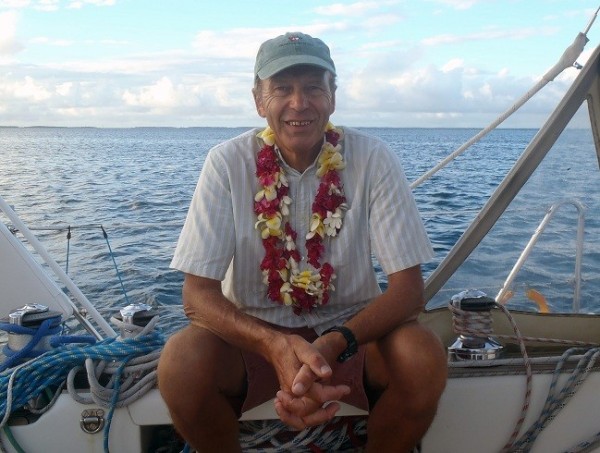
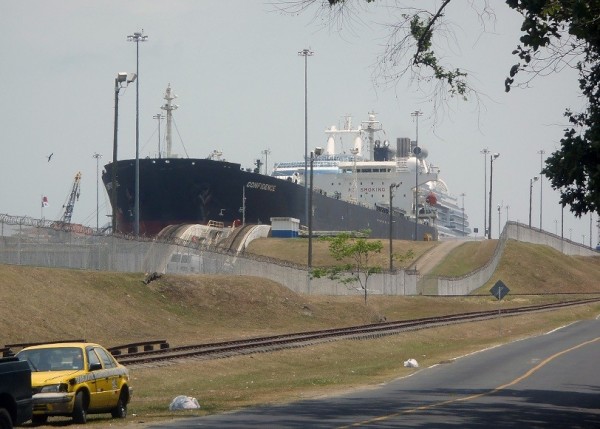
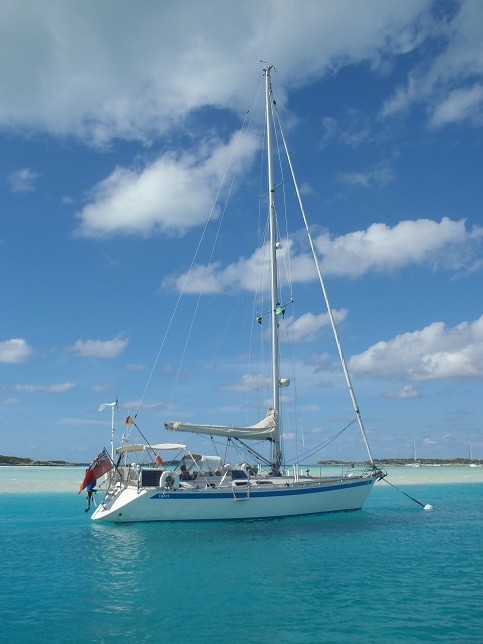
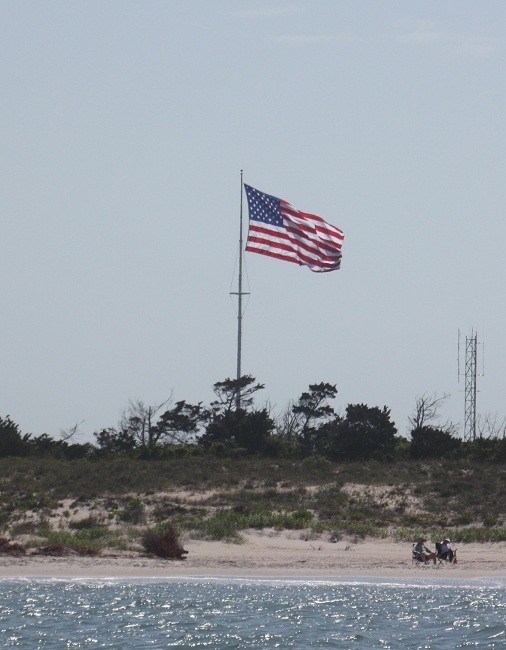
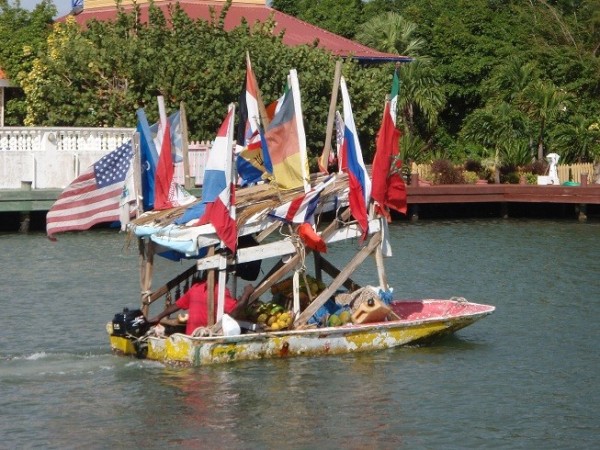
Dune 7 e.jpg)





